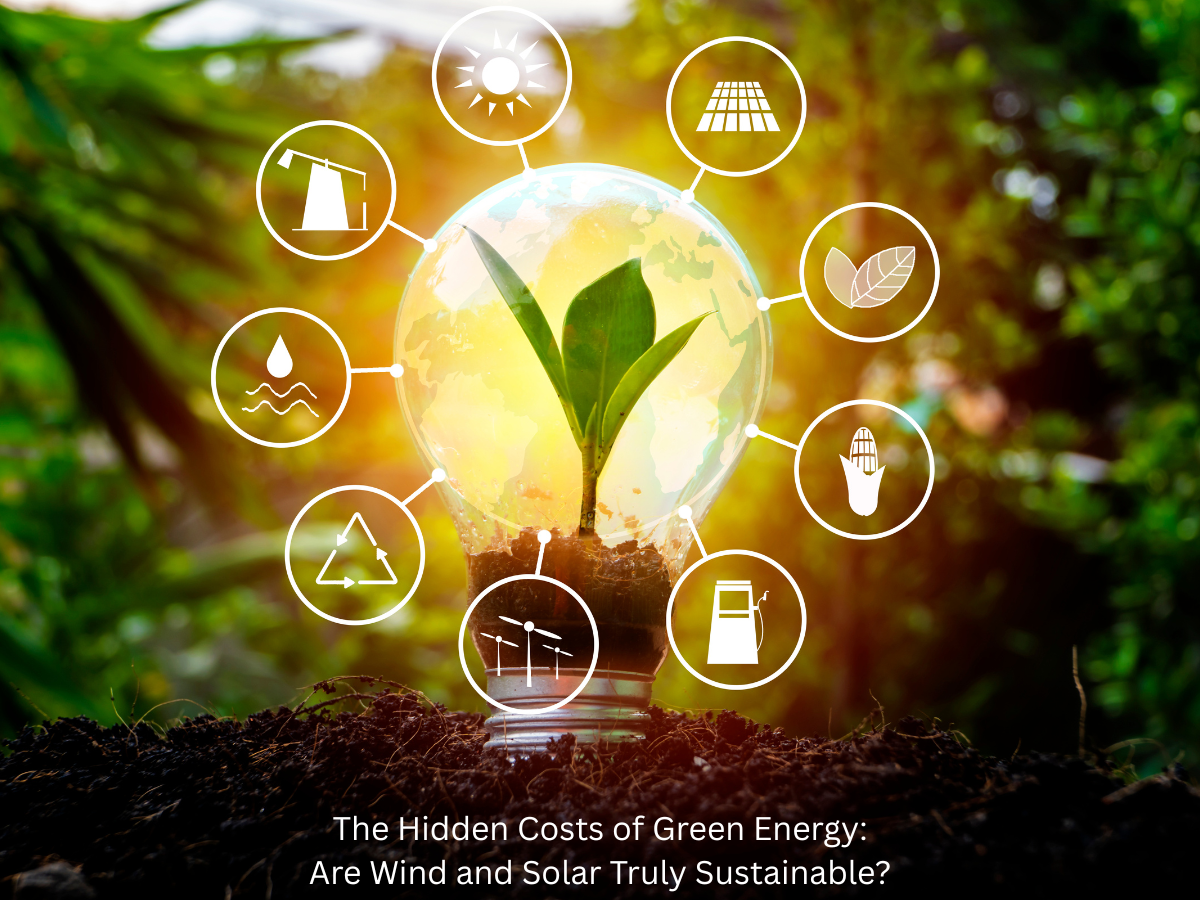🔍 Why this topic? Green energy is often seen as the ideal solution for climate change, but beneath the surface lie overlooked environmental, social,
🔍 Why this topic?
Green energy is often seen as the ideal solution for climate change, but beneath the surface lie overlooked environmental, social, and economic costs. This blog can stand out by going beyond surface-level optimism and diving into complex trade-offs.
🧠 Outline for Deep Research Blog Post:
1. Introduction: The Double-Edged Sword of Green Energy
Quick overview of climate urgency
Popular perception: solar & wind as clean, guilt-free energy
Thesis: Green energy isn’t free from environmental impact
2. What Makes Energy “Green”?
Definition of green/renewable energy
Core benefits: low carbon emissions, renewability
Common sources: solar, wind, hydro, biomass
3. The Environmental Footprint of Solar Power
Manufacturing impact:
Mining of rare earth elements (e.g., cadmium, tellurium)
Energy-intensive panel production
Waste concerns:
Solar panel disposal & recycling challenges
Rising e-waste problem by 2050
Land use & biodiversity loss in large-scale solar farms
4. The Hidden Toll of Wind Energy
Material use:
Steel, copper, fiberglass for turbines
Rare earth magnets (neodymium, dysprosium)
Wildlife impact:
Bird and bat deaths from turbines
Noise pollution & community resistance
Decommissioning issues:
Blade disposal problem (non-recyclable fiberglass)
5. Supply Chain and Human Cost
Child labor and unsafe mining practices in Congo (cobalt, lithium)
Environmental degradation from lithium extraction in South America
Uneven benefits vs. exploitation of the Global South
6. Comparison with Fossil Fuels: Is It Still Better?
Lifecycle emissions: green energy vs. coal, oil, gas
Trade-offs: air pollution vs. resource extraction
Financial costs and government subsidies
7. The Future of Green Tech: Making It Truly Sustainable
Innovations in solar recycling
Biodegradable wind turbine blades
Circular economy in green energy
Policies for ethical and sustainable sourcing
8. Conclusion: Shades of Green
Green energy is necessary but not perfect
Importance of full-cycle thinking
Final takeaway: Sustainability requires constant evaluation, not blind adoption
📚 Data & Sources to Include:
IEA (International Energy Agency) reports
IPCC (Intergovernmental Panel on Climate Change) findings
National Renewable Energy Laboratory (NREL) studies
Scientific journals on environmental science
Real-world case studies (e.g., solar farms in India or lithium mines in Chile)


COMMENTS